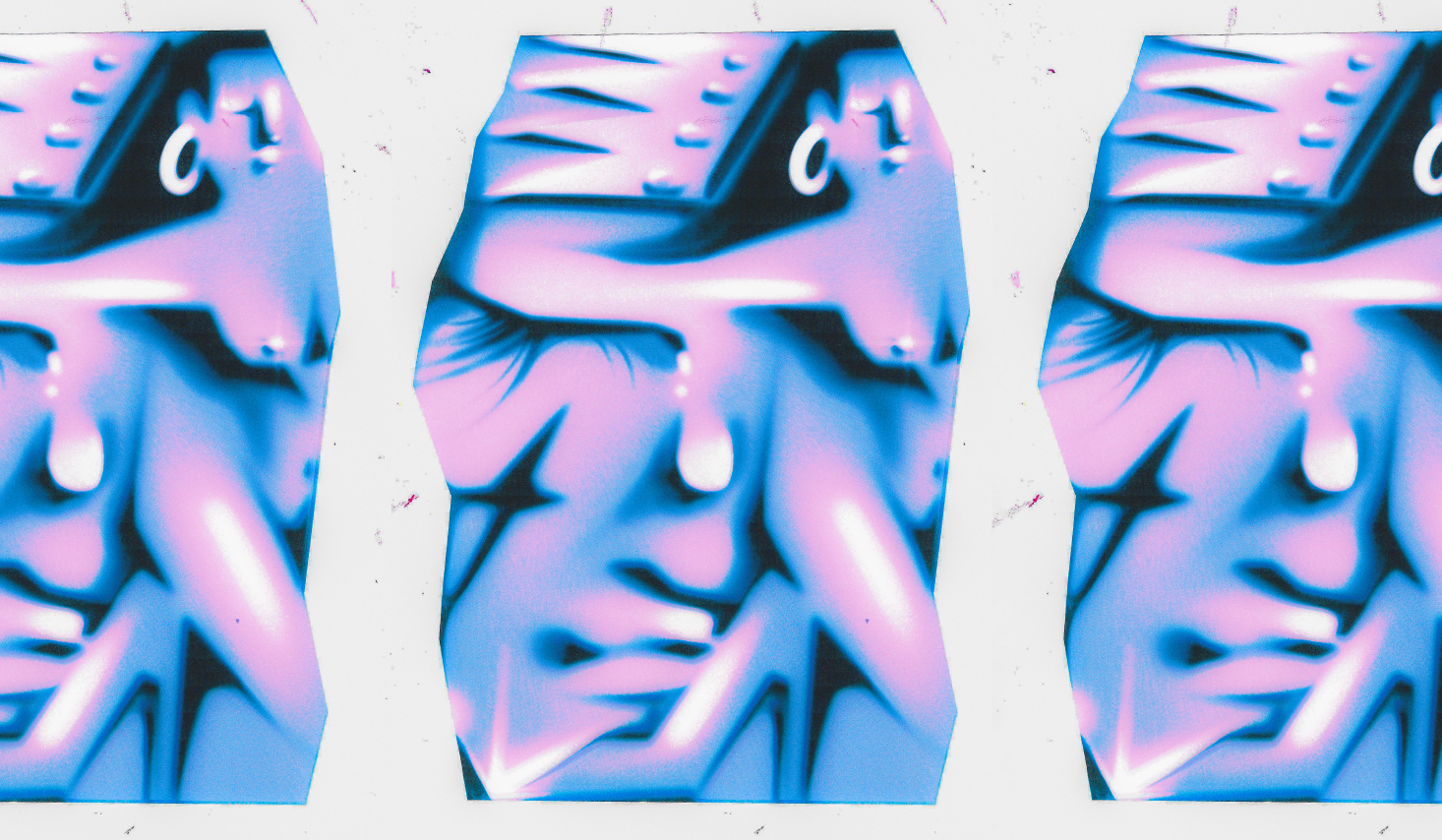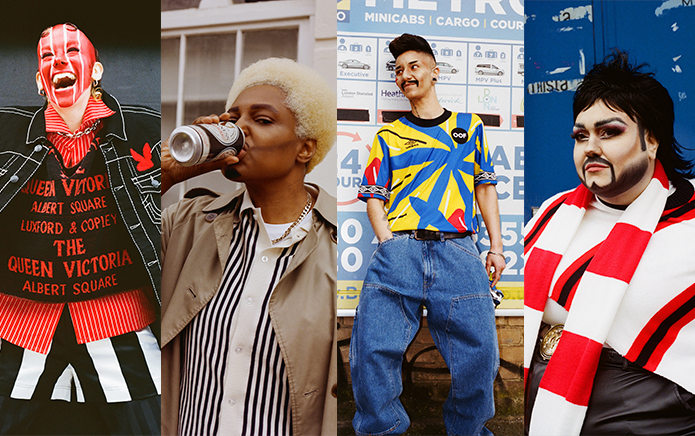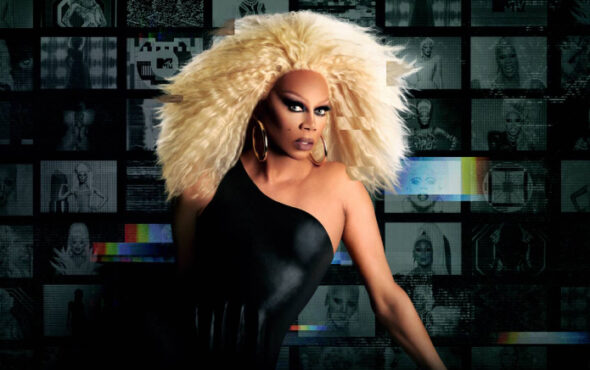
Once upon a time – around 50 years ago – the word “gay” included a lot more than men who are attracted to men, or women who are attracted to women. It was a word used by trans women and femmes to self-describe, a word that brought cis gays and trans people together under one umbrella.
Take Silvia Rivera and Marsha P. Johnson, two of the key figures of the early gay liberation movement to come out of New York City in the late 1960s and early 70s, who used “gay” synonymously “drag queen” and “street queen” when talking about their own identities. Each Pride month, they are championed as trans heroines, demonstrating how “transgender” is a term we apply retrospectively, as a means to understand identities that feel difficult to name. This presents a tricky dilemma: sometimes it makes trans lives more visible, but sometimes it erases the truth of who an individual was, or how they understood themselves.
"I want to talk about how the mistreatment of one group is kind of a collective problem” - Jules Gill-Peterson.
This process of “tranfeminising” people was part of how the modern concept of transgender was created, explains historian Jules Gill-Peterson in her new book, A Short History of Trans Misogyny. She begins with the history of “gendercide” – a term that describes how colonial systems forced colonised peoples into binary male or female categories.
She explains how, in 19th-century British-ruled India, for example, “third gender” Hijras – perceived as male-bodied people wearing women’s clothing – were stripped of their freedom and forcibly placed in men’s clothes. Hijras were viewed as a threat to the moral order of Western society at the time and punished for it, despite the face that they weren’t necessarily transgender.
View this post on Instagram
While many of us might have heard about the colonial erasure of those who lived beyond gender as we understand it today, Gill-Peterson’s book traces this gender policing from its inception as a colonial project to one put into practice by literal police forces and written into law in the 19th century. From there, she says, we start to see individual men and women entrained to see trans femininity as a threat to be put down with violence.
This is why, today, one of the most common forms of violence towards trans people occurs in settings where men are intimate with trans feminine people. It’s why some feminists think they have a right to an opinion over other people’s gender identity. “I don’t think this is a predetermined feature of human psychology,” says Gill-Peterson. “Men are not inherently incited to violence in the presence of trans women and feminists are not inevitably drawn to the denunciation or exclusion of trans women.” Rather, it’s something that was learned.
The goal of Gill-Peterson’s book then, is to explain that we are all – whether overtly transmisogynist or not – implicated. “What that comes down to on a more human level is that transmisogyny is everyone’s business,” Gill-Peterson explains. “Not because I’m trying to charge everyone with it, but because the system of gender were all obligated to be a part of makes us all interdependent. So transfemininity might have been pushed to the bottom of the hierarchy, but that position is related to everyone else’s position in the gender ecosystem. I want to talk about how the mistreatment of one group is kind of a collective problem.”
Gill-Peterson paints a picture of transmisogyny that is, like racism, structural and incipient (notably, racism often also plays a part in the persecution of trans femmes). Transmisogyny also works like misogyny at large, she says, in making examples of women who are perceived to be “too much” or “too disruptive”. By placing transmisogyny in relation to misogyny in general, Gill-Peterson’s work follows in the footsteps of writers like Viviane Namaste or Julia Serrano, and like the best-selling book The Transgender Issue, by Shon Faye, it attempts to explain how we reached the deeply transphobic culture of Britain today.
“We need to understand the disgust and violence levelled at trans women if we’re ever going to change it" - Morgan M Page.
“As a culture, the UK has a lot to answer for when it comes to hating trans women – they’ve made it a sport, a politic, and for some, a cult,” explains trans historian and writer Morgan M Page, whose work – like Gill-Peterson’s – explores the social conditions and relations that make up trans people’s lives in particular historical moments. Transphobia has reached what feels like an apex today; as of 2023, reports of anti-trans hate crimes in Britain reached an all-time high.
In February 2024, Rishi Sunak stood in the House of Commons and made a jibe about trans women’s right to self-determine their gender. That day, Esther Ghey, the mother of Brianna Ghey, the 16-year-old trans girl who was murdered in a UK park in 2023, was attending the Commons. Elsewhere, stand-up specials “by popular has-beens” made up mainly of cruel jokes appear regularly on streaming services, points out Page, and novels about “cross-dressing killers, written by absurdly wealthy writers” have made the bestseller lists. “The UK is high on transmisogyny, it’s addicted to the rush of kicking some of the most vulnerable of our society.”
All of this can make trans misogyny feel like a very modern problem. However, as one of the sharpest lines in Gill-Peterson’s book puts it: “TERFS didn’t invent transmisogyny nor did they put a particularly original spin on it”. Looking at the colonial history of transmisogyny, for instance, lets us view trans-exclusionary radical feminists in a broader context of what Gill-Peterson calls “British Empire revivalism” – as white feminists who, post-Brexit, have close relationships with state actors and feel insecure about their power and role.
“We need to understand the disgust and violence levelled at trans women if we’re ever going to change it,” summarises Page, yet this task creates another dilemma. Along with the difficulty of looking at trans histories when the concept of transgender itself has shifted so much over time, how do we talk about trans histories without only focusing on violence, or how trans identity was formed in the image of the oppressor?
“There is a risk in writing a book about violence that you end up reasserting the centrality of that violence,” Gill-Peterson agrees. “But I think part of what makes transmisogyny so particularly cruel is that it revels in violence and also denies it. The worst things that routinely happen to trans women go unnoticed, are normalised, or denied as real violence. Sometimes transfeminine people are even positioned as the perpetrators of violence.” We could think here of how some feminists pose trans women as a threat to their safety – particularly in public bathrooms. “For me, what it means to take the risk of going there and spending so much time on transmisogyny is to insist on reality, to show the structure of violence has a pattern and a history.” For Gill-Peterson, naming the violence should be a starting place for moving past it.
The same applies to social justice movements, too, she adds. Too often, trans women and particularly Black trans women are held up as the most vulnerable in our society, which can have a degrading effect. “This is the strangeness of the world we live in today – everyone knows, whatever their politics, that violence against trans women is a huge issue. But I don’t know if that’s done anything to make the world more hospitable for trans women.”
One answer for moving past the spectacle of violence towards trans people is to be conscious of how we tell their stories, and how we select those stories we choose to seek out. Reading A Short History of Trans Misogyny, one can feel Gill-Peterson going to lengths to animate and honour the rich lives of the femmes she writes about through archival research. Page’s work takes a similar focus (check out Harsh Reality, her podcast about a particularly exploitative early 2000s reality show).
Page offers other examples: “A new play by two young trans women is about to open at Soho Theatre called 52 Monologues for Young Transsexuals. The HBO documentary The Stroll is another great piece exploring the history of trans sex working women in NYC’s meatpacking districts, and D Smith’s brilliant documentary KOKOMO CITY centres on the experiences of Black trans women sex workers, as well as the ways transmisogynoir shapes their lives.”
“It’s to our own peril that we don’t lift [trans women and femmes] up" - Jules Gill-Peterson.
Gill-Peterson, meanwhile, suggests checking out the work of artist Tourmaline, who reconstructs Black trans histories through her films, often with a spiritual element. Start with the film Salacia, currently showing at the Tate Modern, which images the life of Mary Jones, a Black trans woman and sex worker who lived in antebellum New York City, or the 2017 short Happy Birthday, Marsha!, which depicts Johnson and Rivera in the hours before the Stonewall Riots.
As well as engaging with stories about the nuance and multitude of trans lives, to truly work to overcome transmisogyny we need a broader shift in mindset, says Gill-Peterson. One starting place is to look back at that moment in history when a distinction was made between gay people and trans people. “After the Stonewall Riots, there was a moment when poor street queens were unceremoniously ejected from the gay rights movement, as too disruptive and too disreputable.” In her book, she offers the example of Rivera getting booed off stage at New York City’s Christopher Street Liberation Day Rally in 1973. “This is a gesture that some anti-trans feminists then start picking up in the 70s as well – the idea that trans people will ruin the movement for everyone else because they’re trashy and deceitful.”
We need to ask ourselves, says Gill-Peterson, what did we give up at that moment? “Gay and lesbian rights have experienced tremendous successes partly by becoming “respectable”, by saying: ‘Hey, sexual orientation is kind of a private choice, but ultimately we’re healthy men and women, not like those people. One of the things that has given us all pause is that this was not a successful strategy, homophobia is still incredibly good politics – the US is consumed by political homophobia right now.” See for instance, Florida’s ‘Don’t Say Gay’ bill, which bans discussions of sexual orientation and gender identity in schools. “It doesn’t seem to me that selling out trans women and femmes to secure gay and lesbian rights even worked. What we can do, is come back to lessons from some of the poorest and most mistreated in the LGBTQ+ movement to think about how to respond to the political crises we’re facing today.”
A return to the idea of “gay” as what it once meant could shape a radical demand for a more just society, says Gill-Peterson. “Ultimately, we have not been giving credit where due; transfeminised people have a broad understanding of coalition work, solidarity, making demands that go beyond the narrow demands of traditional politics. They know the world better than anyone, the hypocrisies, what’s valued and what is it, what makes people tick – because they’ve had to understand it to survive. It’s to our own peril that we don’t lift them up.”
Whether they identified as transgender or not, in a sense, trans people have always been there, and they have always shown ingenuity and built community in the face of transphobia and particularly transmisogyny. “With that in mind,” Gill-Peterson concludes, “aren’t we going to want transfeminised people at the centre of our movement?”
This interview is taken from the March 2024 issue of GAY TIMES. Head to Apple News + for more exclusive features and interviews from the issue.



